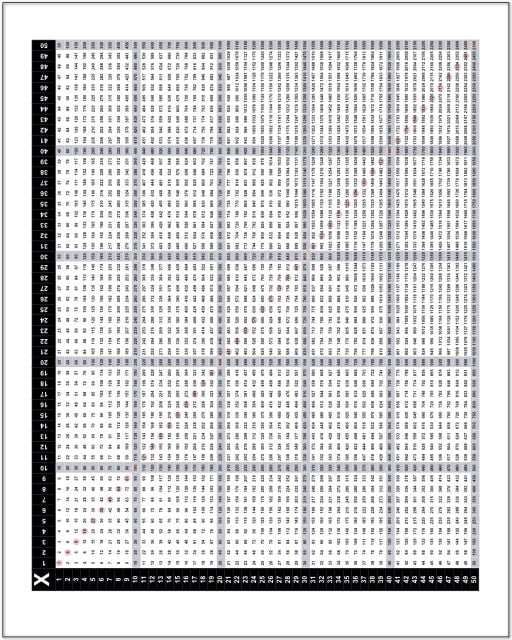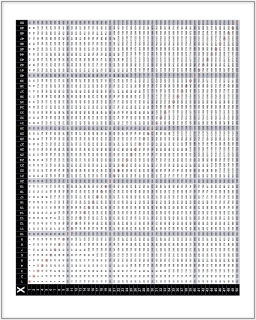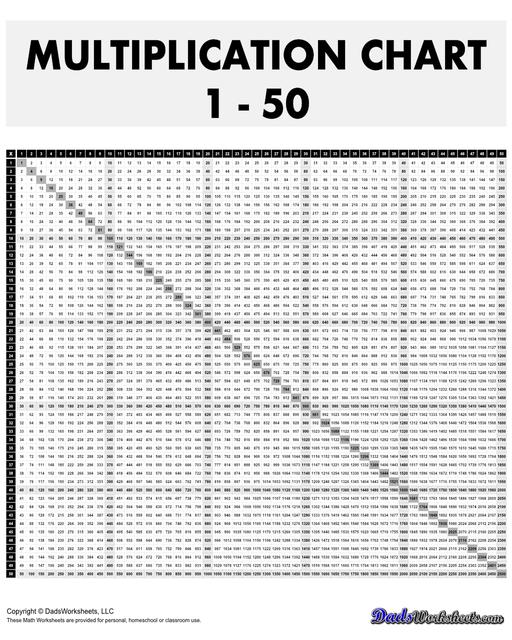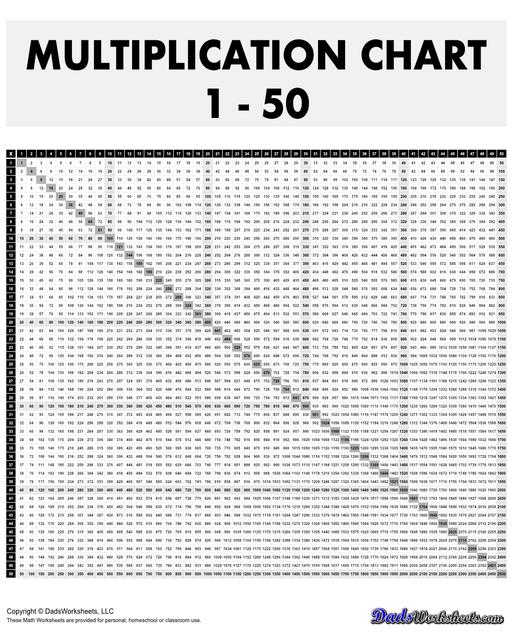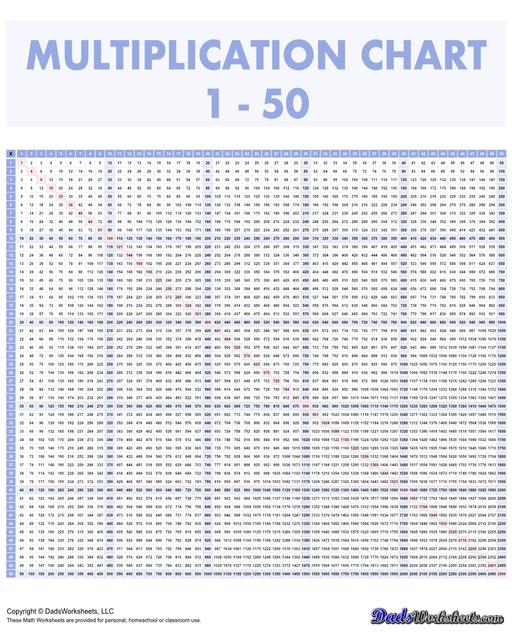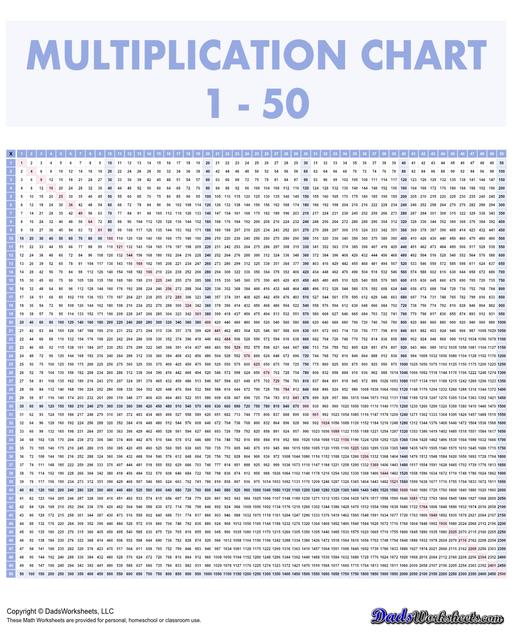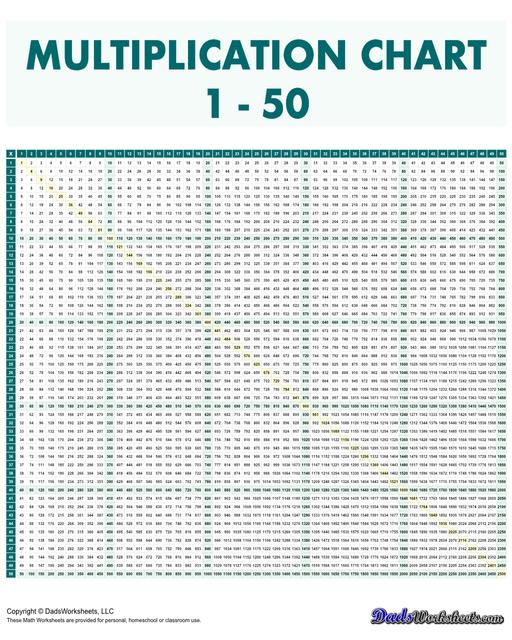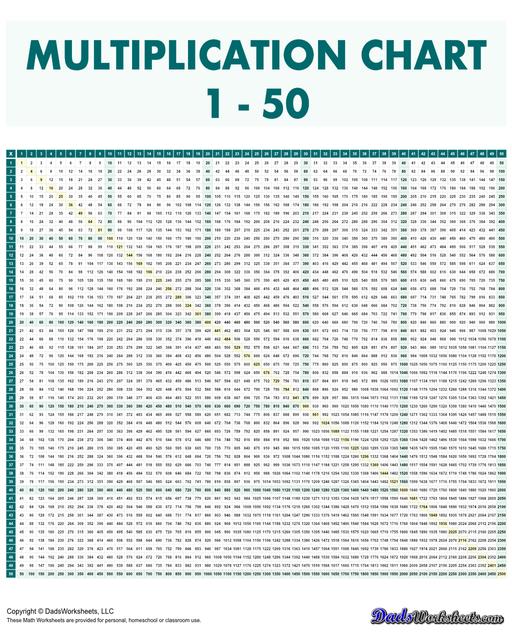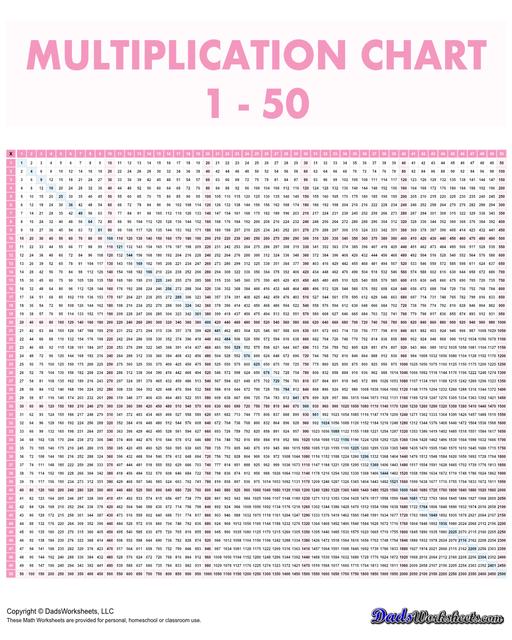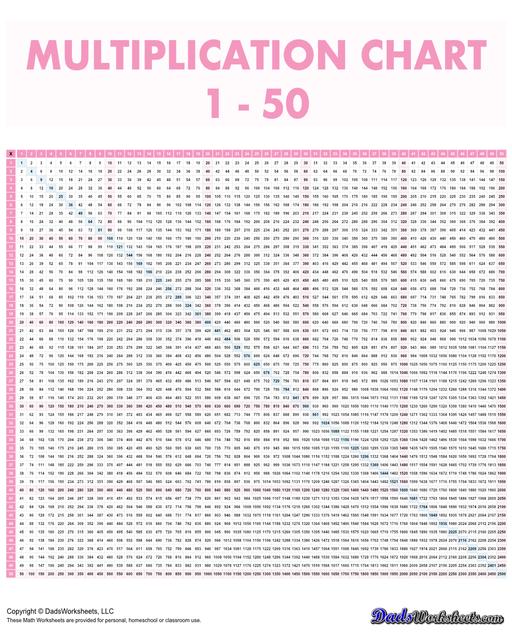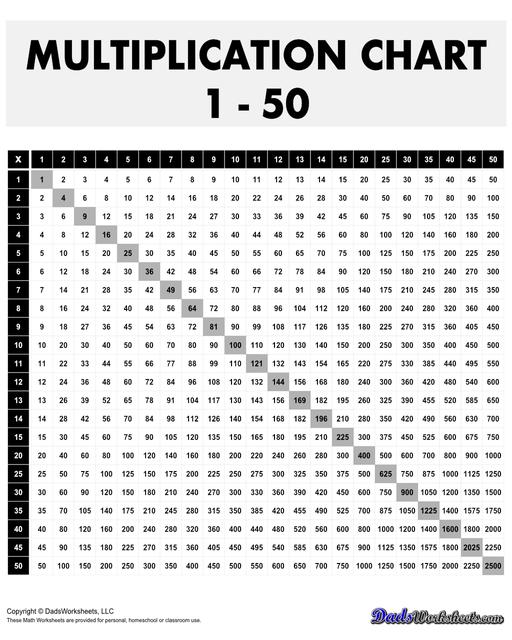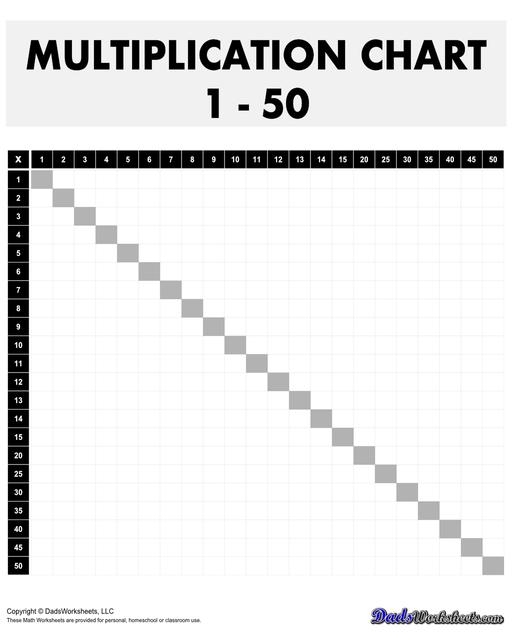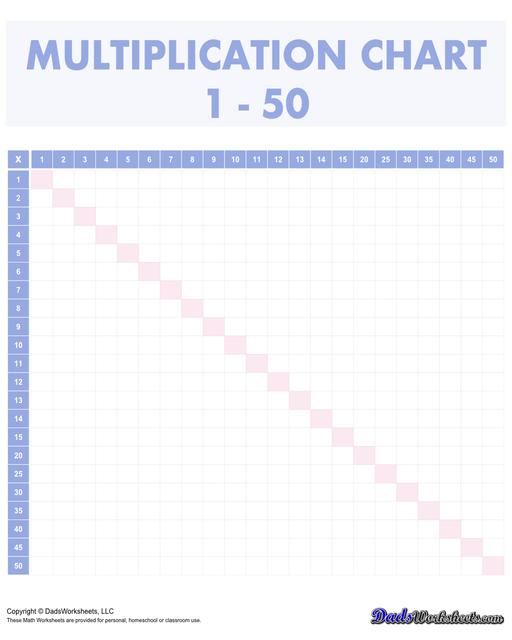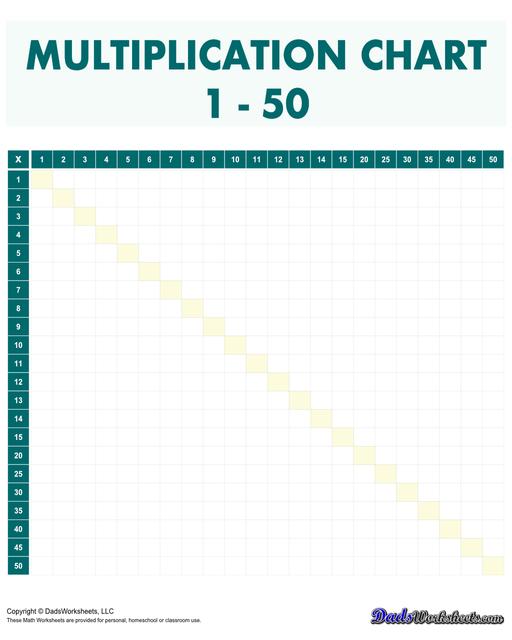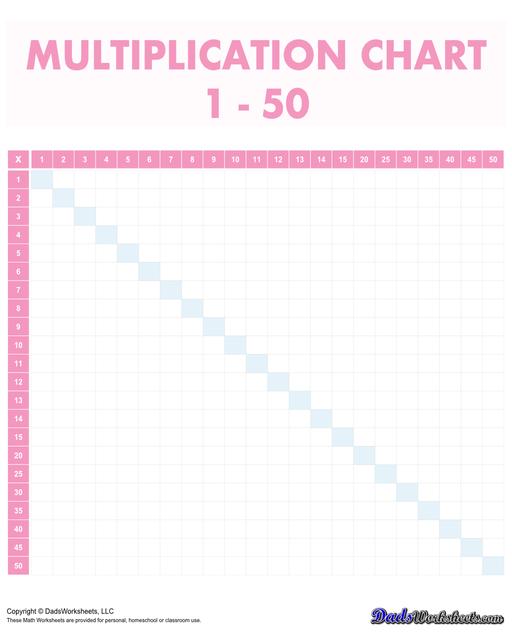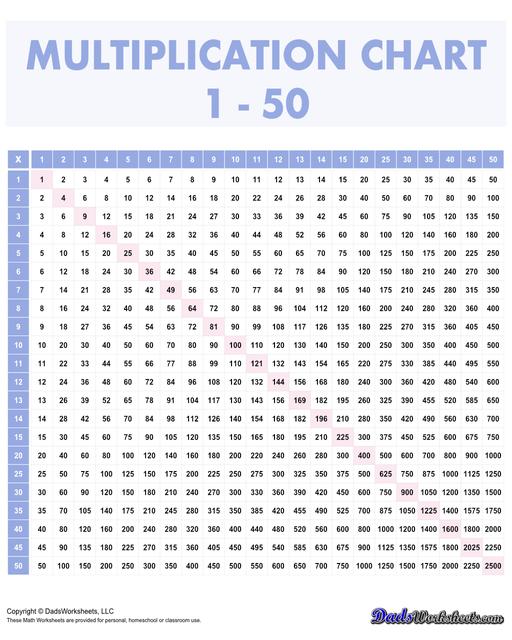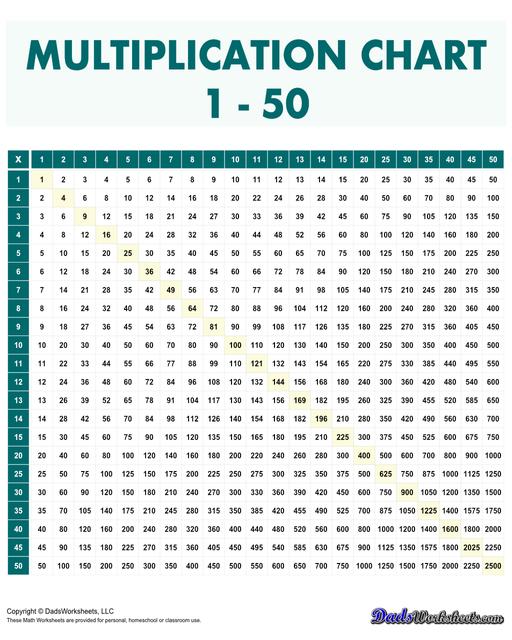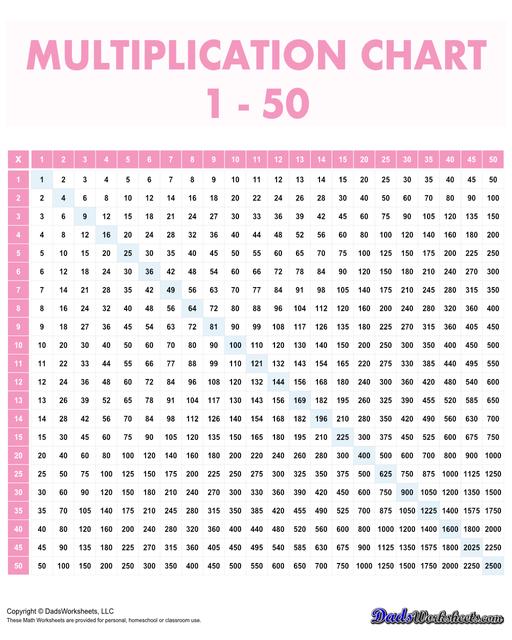Core Math Worksheets
Fraction Worksheets
Word Problems
Algebra and Trigonometry
Other Worksheets
Place Value
Percentages
Rounding Numbers
Ordering Numbers
Standard, Expanded, Word Form
Mean Median Mode Range
Ratio Worksheets
Probability Worksheets
Roman Numerals
Factorization, GCD, LCM
Prime and Composite Numbers
Pre-Algebra
Geometry Worksheets
Blank Clocks
Telling Analog Time
Analog Elapsed Time
Greater Than and Less Than
Money
Arithmetic Sequences
Geometric Sequences
Venn Diagram
Graph Worksheets
Measurement & Conversions
Patterns and Puzzles
Color by Number
Holiday & Seasonal
Early Learning
Printables
Calculators
Multiplication Chart: Multiplication Chart 50x50
This 50x50 multiplication reference chart goes all the way to 2500! Here's a wakeup call for those middle school students who think multiplication facts stop at 100!
Multiplication Charts 1-50
Mine the Depths of the Multiplication Table with this 50x50 Chart!
If you're exploring multiplication with larger multiplicands, these 50x50 charts can be a useful reference tool. The charts here provide a ready way to look at problems covering multiplicands 1-50 compared to the usual smaller tables we use to learn the times table.
The multiplication chart 1-50 are most beneficial to visual learners as the charts provide a visual representation of multiplication facts of bigger numbers. Observing how multiplication products change within a series of problems across larger ranges of numbers can develop a number sense in ways that basic times table practice only begins to reveal.
The charts highlight the perfect multiplication squares (the diagonal pattern in the chart) too, which is helpful when navigating a number chart of this magnitude. This makes it easier for students to grasp the relationships between numbers and remember everything easily. Let me talk about this more. Continue reading below…
Perfect Multiplication Squares
By highlighting the perfect multiplication squares, such as 1, 4, 9, 16, 25, etc., within the multiplication chart, you draw attention to specific numbers that have special mathematical properties. Students may also notice the specific mathematical patterns, such as the square of an odd number always being odd and the square of an even number always being even. It helps students even more to recognize the patterns within the multiplication charts. Highlighting these numbers helps students memorize them more easily.
Moving forward, understanding these patterns can aid in mental math and problem-solving, particularly in mathematics problems that involve finding square roots, calculating areas of squares or rectangles, or solving equations involving squares. Perfect squares have direct relevance to geometry, particularly in the context of squares and square roots. Highlighting perfect squares in multiplication charts can help students make connections between arithmetic and geometric concepts, enhancing their overall understanding of mathematics.
Memorizing the Multiplication Chart 1-50
The absolute fastest way to multiply two-digit numbers is to already know the result, by having learned the two-digit part of the multiplication table just like you learned the one-digit part of it. Of course it means a lot of work up front.. and memorizing the multiplication chart, especially when it involves bigger numbers such as the charts here can seem daunting at first, but with the right strategies and practice, it can become much easier. Here are some tips and tricks to help you memorize the multiplication chart effectively:
- Begin by memorizing the multiplication tables for smaller numbers, such as 1 through 5. These are often easier to remember and serve as building blocks for learning larger multiplication facts.
- Create multiplication mnemonics or memory aids to associate multiplication facts with memorable phrases or images.
- Break down the multiplication chart into smaller, manageable chunks and focus on memorizing one chunk at a time. For example, you can focus on memorizing the multiples of 14, then move on to the multiples of 15, and so on.
- Practice multiplication facts regularly through drills, flashcards, or multiplication games. The more you practice, the more familiar and automatic the facts will become.
- Utilize visual aids such as multiplication charts, posters, or apps that display multiplication tables in a visual format. Visualizing the multiplication facts can help reinforce memory and comprehension.
- Turn memorization into a game or challenge to make it more enjoyable. Compete with friends or family members, use rewards or incentives for reaching milestones, or incorporate multiplication into fun activities or puzzles.
- Look for opportunities to apply multiplication in everyday situations. For example, calculate the total cost of items when shopping, determine the number of objects in arrays or groups, or calculate areas and volumes of shapes.
- Notice and exploit number patterns within the multiplication chart. For instance, the products of multiplying by 10 are simply adding a zero to the end of the multiplicand, and the products of multiplying by 5 are half of the products of multiplying by 10.
- Teaching someone else what you've learned reinforces your own understanding and memory. Explain multiplication concepts and facts to a friend, sibling, or parent to solidify your own knowledge.
Generally, multiplication charts provide a systematic way for students to learn and memorize multiplication facts from 1 to a specified number, such as 50. This is the most important core skill that you need for developing strong math skills and lays the foundation for other mathematical concepts and for advancing to higher levels of math, such as algebra, where multiplication of variables and polynomials is common. A strong foundation in multiplication facilitates smoother progression through the math curriculum.
With that said, having quick access to multiplication facts allows learners to approach more complex mathematical problems with greater confidence and multiplication charts can do just that! Explore all the versions of our high quality PDF multiplication charts 1-50, or just use any of it as a reference when you need to multiply larger numbers.
If you are looking for more variety, be sure to check out some of the dozens of other versions at the main multiplication chart page!
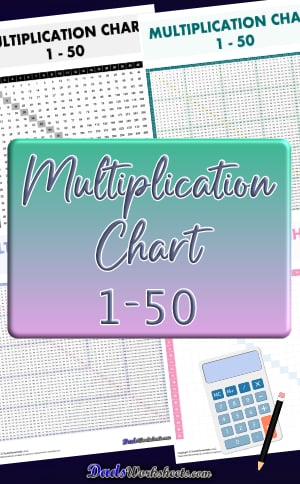
Worksheet History
